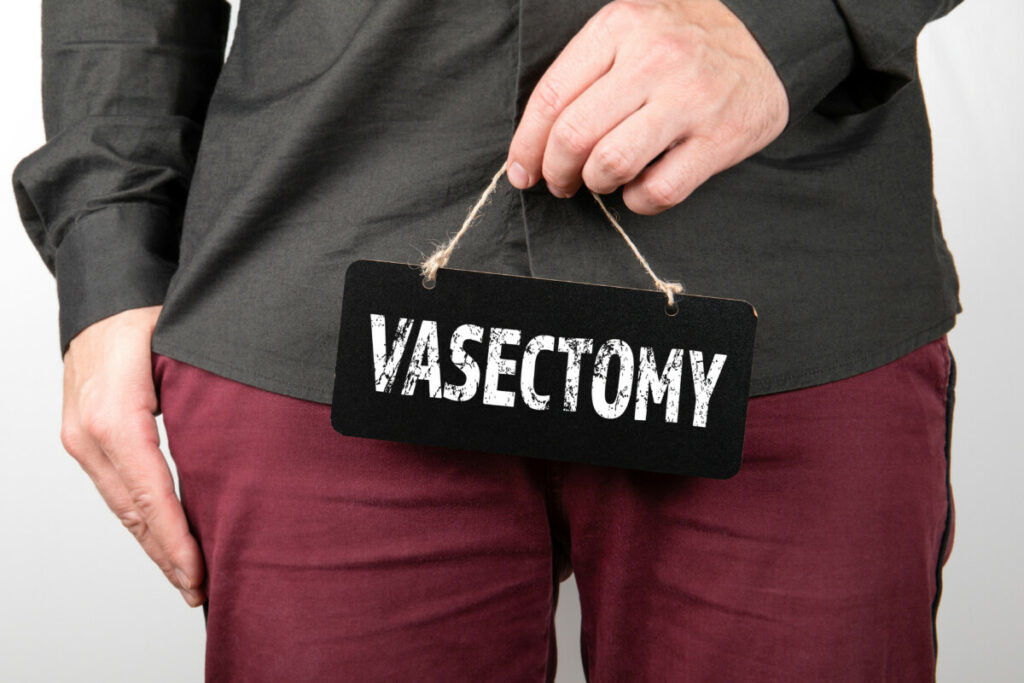This post may contain affiliate links, which means if you enroll through my link, I’ll receive a small commission at no extra cost to you.

A vasectomy can be a really important healthcare choice for many men and families. If you do not have insurance or are lacking coverage, you may be wondering how much it will cost you and if it will be worth the price.
The average cost of a vasectomy without insurance in the United States is between $500 and $1,000. However, the total cost can be higher depending on additional factors, such as the facility fee, anesthesia fee, and follow-up care. In some cases, the total cost can range from $1,000 to $3,000.
Here’s a breakdown of how much a vasectomy will cost without insurance and what will make the final price higher or lower.
Cost of Vasectomy without Insurance
A vasectomy is a common, safe, and effective form of permanent birth control for men. However, the cost of the procedure can be concerning for those without insurance. Without insurance, the average cost of a vasectomy in the United States is between $500 and $1,000. However, this cost can vary depending on several factors, including where you live and the type of procedure performed.
The total cost of a vasectomy is affected by several different components, such as the surgeon’s fee, the facility fee, and the anesthesia fee. The surgeon’s fee typically accounts for the largest portion of the total cost, ranging from $300 to $700. The facility fee can range from $150 to $500, while the anesthesia fee can range from $50 to $200. Additionally, some clinics or providers may charge a consultation fee for follow-up visits.
It is standard care to have a follow-up appointment 6-8 weeks after the procedure to check the incision site and to ensure you are no longer producing any sperm. This is a very important check-up that will determine whether or not the surgery was successful. You can ask your doctor or clinic how much this follow-up visit is expected to cost or if it is already included in the cost of the procedure. You will likely have to pay some laboratory fees.
It’s important to note that the cost of a vasectomy can also vary depending on the type of procedure you choose. A traditional vasectomy involves making two incisions in the scrotum, while a no-scalpel vasectomy uses a special instrument to make a tiny puncture instead. A no-scalpel vasectomy typically costs more than a traditional vasectomy but may be preferred by some men due to the quicker recovery time and reduced risk of complications.
A traditional vasectomy typically costs about $1,000. A no-scalpel vasectomy can cost up to $1,300 without insurance. Because a no-scalpel vasectomy requires the use of specialized equipment, the procedure costs more than a traditional vasectomy.
If you have the extra money, the no-scalpel procedure is a really good option. Many men prefer this technique because the recovery time is shorter and there are fewer potential complications. If you need to get back to work quickly, have plans coming up, or have a low pain tolerance, the extra cost may be worth it.
Some doctors only do one type of procedure, while others can do both. Call your preferred clinic or doctor to ask what your options are.
Post-Vasectomy Care
With any type of vasectomy, patients typically want some sort of pain management following the procedure. Most men will experience some degree of tenderness and pain ranging from mild to severe depending on how the procedure went and their pain tolerance.
Depending on your doctor and your preferences, you may use a prescription painkiller for the first few days after the procedure and then switch to an over-the-counter pain medication when you are ready. Some doctors will prescribe an opioid painkiller for the first 2-3 days, which costs about $30 to fill without insurance.
Some doctors prefer their patients to only use over-the-counter painkillers like ibuprofen, also known as Advil or Motrin. Whether you start with ibuprofen or switch to it a few days after the procedure, you will want to have a bottle on hand. The price of over-the-counter medication is not affected by insurance, but if you want to include post-op care in your cost calculations, keep in mind that over-the-counter painkillers will cost $2 to $5 per bottle.
There are a few other items you will need in order to take care of yourself after a vasectomy that will cost the same whether or not you have insurance. You will want ice packs so you can ice the area for 24 hours after the procedure. You can use gel ice packs or simply use a bag of frozen vegetables from your freezer. You will also need to wear supportive, compression-style undergarments. Some doctors recommended using an athletic cup to protect the scrotum.
Hopefully, you already have most or all of these things at home. Depending on what you need to buy, post-op care may cost you anywhere from $0 to $50.

Factors that Affect the Cost of Vasectomy
Understanding the factors that influence the cost of a vasectomy can help you make an informed decision. Here are some factors that can affect the cost of a vasectomy:
- Geographic Location: The cost of a vasectomy can vary depending on where you live. In general, urban areas tend to have higher costs than rural areas for all medical procedures.
- Type of Vasectomy: The cost of a traditional vasectomy is generally lower than that of a no-scalpel vasectomy. However, a no-scalpel vasectomy may be preferred by some men due to its quicker recovery time and lower risk of complications.
- The Surgeon’s Experience: It is important to choose a surgeon who is experienced and skilled to ensure a safe and successful procedure, but surgeons with more experience may charge more for their services.
- Facility Fees: The cost of the facility where the procedure is performed can also affect the total cost. Some clinics or providers may charge more for the use of their facility, while others may offer lower rates. Call some local clinics and hospitals in your area to help you choose a cost-effective location.
- Anesthesia Fees: The type of anesthesia used during the procedure can also affect the cost. Local anesthesia is typically less expensive than general anesthesia. Most doctors prefer to use local anesthesia when performing vasectomies.
- Follow-Up Care: Some providers may charge additional fees for follow-up visits after the procedure. It’s important to discuss all costs associated with the procedure with your healthcare provider before making a decision.
Low-Cost Vasectomy Options
If you’re considering a vasectomy but are concerned about the cost without insurance, there are several low-cost options available. Here are some things to look into:
- Planned Parenthood: Planned Parenthood offers affordable vasectomy services to men who meet certain income requirements. The cost of a vasectomy at Planned Parenthood can range from $0 to $1,000. Planned Parenthood offers consultations where you can talk about pricing.
- Local Health Clinics: Many local health clinics offer low-cost vasectomy services. These clinics may have a sliding fee scale based on income or charge a flat fee for the procedure. You can call the clinic or go to their website to see if they have any financial assistance available. This will typically involve filling out some sort of application and providing information about your income.
Payment Options for Vasectomy
If you do not qualify for a lower-cost vasectomy option, there are several payment options available that can help make the procedure more affordable if you don’t have health insurance.
- Health Savings Account (HSA): If you have an HSA, you can use the funds in the account to pay for the procedure. This can be a tax-free way to pay for the procedure. You will typically set up an HSA in association with your place of employment. HSAs are typically yearly commitments, so plan ahead to put more into your HSA during the year you plan to get the procedure done.
- Flexible spending account (FSA): Similar to an HSA, if you have an FSA, you can use the funds in the account to pay for the procedure. It works very similarly to an HSA but has fewer restrictions on what you can use the money for.
- Payment plans: Some providers may offer payment plans for the cost of the procedure. This can help make the cost more manageable by spreading it out over time.
- Financing: Some medical facilities offer financing options for medical procedures, including vasectomies. This can be a good option if you don’t have insurance coverage or enough funds in your HSA or FSA.
It’s important to discuss all payment options with your healthcare provider before making a decision. They can help you determine the best option for your individual needs and budget.

How to Save Money on a Vasectomy
- Shop Around: Get quotes from different healthcare providers to compare the cost of the procedure. Some providers may be cheaper than others.
- Choose a Traditional Vasectomy: A traditional vasectomy is generally less expensive than a no-scalpel vasectomy. While a no-scalpel vasectomy may offer certain benefits, a traditional vasectomy may be a more affordable option.
- Reduce Your Pain Management: Local anesthesia rather than general will cost less and will still allow you to feel no pain during the procedure. You may feel some discomfort, but that might be worth the lower price. You can also opt out of using any prescription painkillers and use over-the-counter medication instead.
- Use a Health Savings Account (HSA) or Flexible Spending Account (FSA): These accounts allow you to use pre-tax dollars to pay for medical expenses, including a vasectomy.
- Look for Discounts: Some providers may offer discounts for paying in cash, paying upfront, or paying in full rather than in multiple payments. Ask your local healthcare clinic what discounts they offer and find what works best for you.
- Discuss all Costs Upfront: Before scheduling the procedure, discuss all costs associated with the procedure with your healthcare provider. This can help you avoid unexpected fees and clarify your preferences.
By following these tips, you can save money on a vasectomy while still ensuring a safe and successful procedure. Remember to choose a qualified and experienced healthcare provider for the procedure, as the cost should not be the only factor in your decision-making process.
Other Considerations for Vasectomy Cost
While the cost of a vasectomy may be a primary concern for many men, there are several other considerations to keep in mind. Here are some other factors to consider when evaluating the cost of a vasectomy:
- Long-term Savings: While the initial cost of a vasectomy may seem high, it is a one-time expense that can provide significant long-term savings. Over time, the cost of contraceptives for men and women can add up, making a vasectomy a cost-effective option. A vasectomy will also ensure that you will not have to pay for the birth and care of a new baby. Kids can be very expensive.
- Cost of Reversal: While a vasectomy is a permanent form of contraception, it is possible to reverse the procedure if necessary. However, the cost of a vasectomy reversal can be high. Only pay for a vasectomy if you are confident in your choice or are prepared to pay for a reversal later.
- Time Off Work: Depending on the type of work you do, you may need to take time off after the procedure. Most men take 2-3 days of rest to recover before returning to work. If your job involves physical labor, you will likely need to take even more time off. Ask your doctor when you can return to your normal activities. Missing work can result in lost wages, especially if your pay is hourly or commission based.
- Emotional Considerations: For some men, the decision to have a vasectomy can be emotionally charged. While the cost of the procedure is important to consider, it is also important to take the time to carefully consider the effect a vasectomy will have on your well-being. For some men, this may be positive, and for others, it may be negative.
When evaluating the cost of a vasectomy when you don’t have insurance, it is important to consider all of these factors to make an informed decision. By carefully weighing the costs and benefits, you can make the best decision for your individual needs and situation.
Health shares are not insurance and do not offer insurance coverage. Membership in a health share does not guarantee the payment or reimbursement of medical expenses. Each organization operates under its own membership guidelines, which determine what expenses may be eligible for sharing. This publication is for informational purposes only and is not provided by an insurance company. For state-specific notices and full program details, please visit the respective health share’s official website.





Leave a Reply